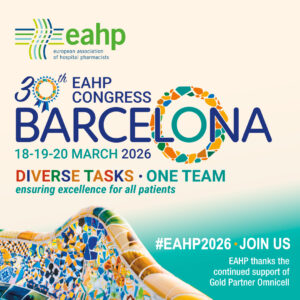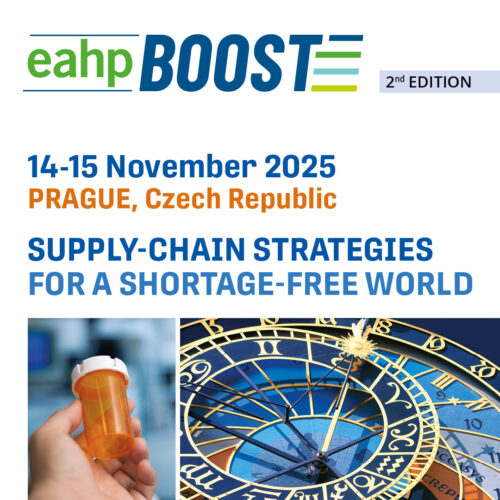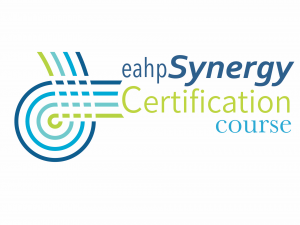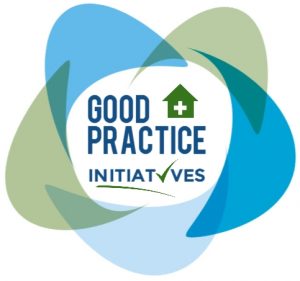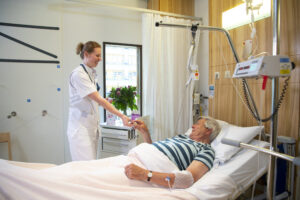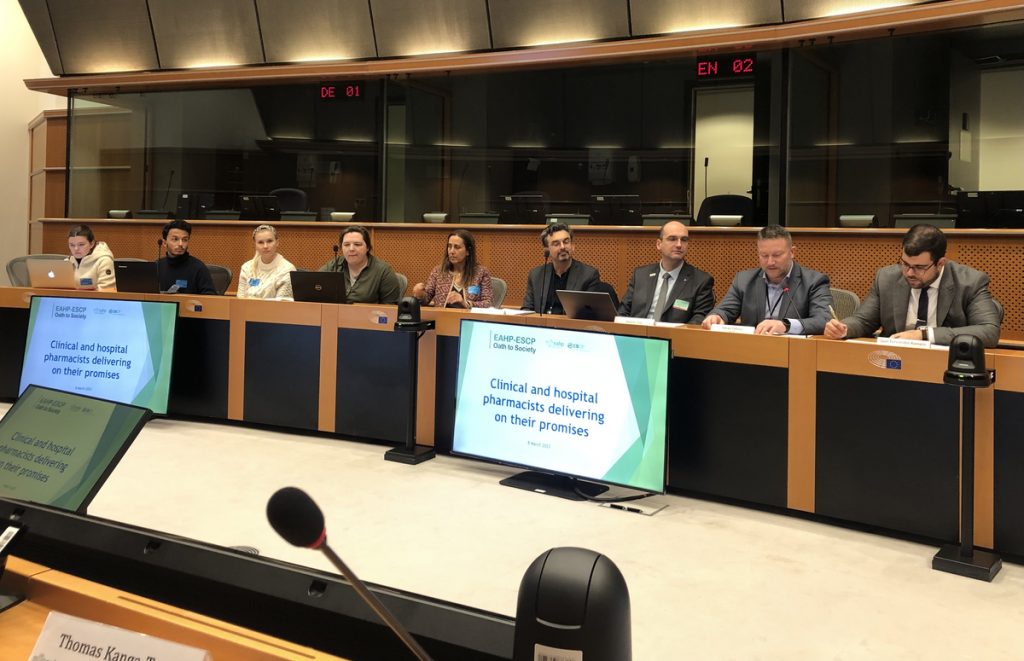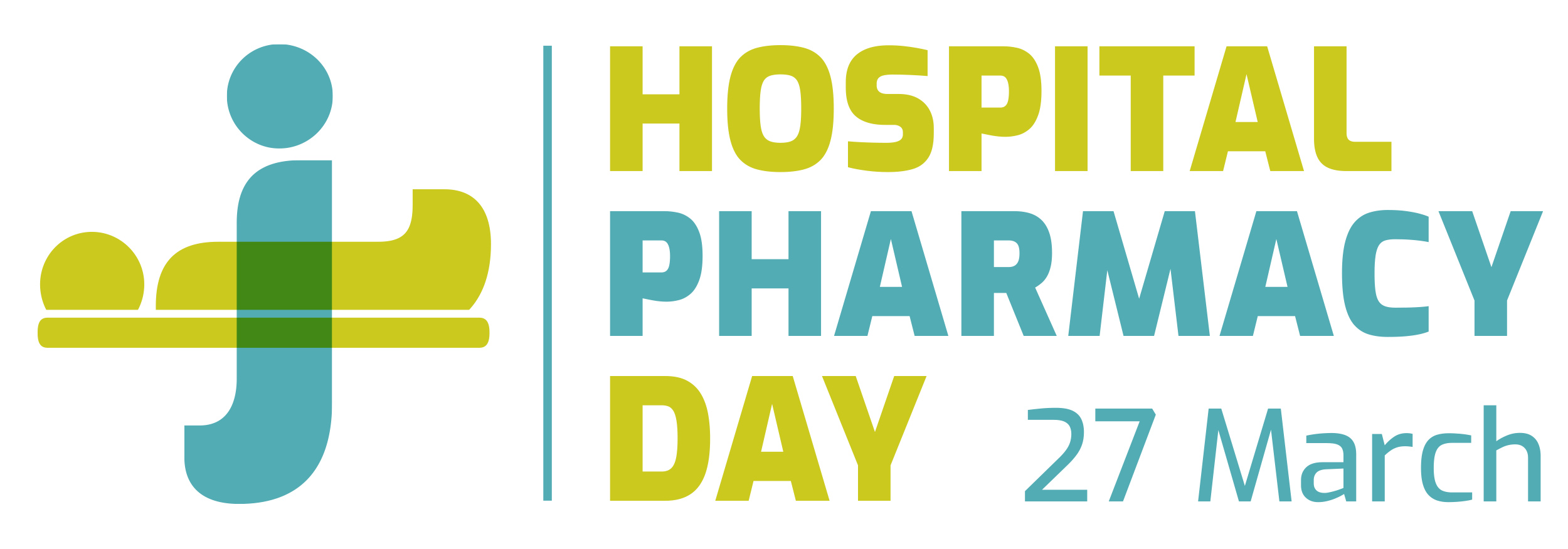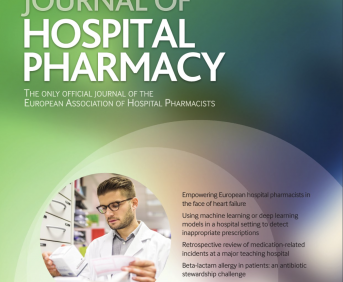DEPRESCRIBING FOR OLDER PATIENTS IN AN EMERGENCY DEPARTMENT DURING CARE TRANSITIONS
Pdf

European Statement
Clinical Pharmacy Services
Author(s)
M.Sc.Pharm., Hanne Fischer; M.Sc.Pharm., Sarah Daaskov Egelund; M.Sc.Pharm., Amalie Bruno-Johansen; Cand.Med. Rune Pihl; M.Sc.Pharm., Ph.D., Charlotte Vermehren.
Why was it done?
Deprescribing for older patients is proposed to mitigate the risks of harm associated with polypharmacy. Deprescribing initiated in the ED is effective only if maintained across healthcare sectors with patient adherence. Some ED pharmacists in Denmark have the authority to approve medication changes in electronic records, potentially enhancing implementation. We aimed to elucidate the degree of implementation of recommended deprescribing interventions across sectors for older patients, facilitated by ED pharmacists. Additionally, we explored differences in implementation based on whether deprescribing was authorized by pharmacists or delegated to an ED doctor or general practitioner (GP).
What was done?
The pilot study was conducted to explore the recommendation and implementation of deprescribing for older patients across sectors, facilitated by pharmacists in a Danish Emergency Department (ED).
How was it done?
Pharmacists initiated deprescribing interventions, ensured consensus with the patient and/or ED doctor, respectively, and were assigned responsibility for authorizing medication changes. Pharmacists checked for implementation in the shared medication record (FMK) after 14 and 30 days and contacted, if possible, self-administrated patients 14 days post-discharge to assess adherence. The following were registered:
• Who held the responsibility to authorize?
• What kind of medication was deprescribed?
• To what extent were the changes implemented in FMK after 14 and 30 days?
• What was the adherence for the contacted patients?
What has been achieved?
The study involved pharmacist-led interventions for 39 patients. Twenty-three patients (59%) had their change implemented in FMK after 14 days. Two more patients had their FMK changed between day 14 and day 30. Changes authorized by a pharmacist (nine patients) resulted in an implementation rate of 100%, whereas it was 62% and 27% respectively when delegated to the ED doctor (20 patients) or GP (11 patients). Ten patients were contacted, of which seven confirmed adherences. The deprescribed medication included 43 drugs, corresponding to 35 different generic drugs.
What next?
Pharmacist-led interventions in the ED improve implementation of deprescribing across care transitions. When pharmacists are authorized to make changes themselves rather than delegate to an ED or GP, the degree of implementation may increase. This finding supports the involvement of clinical pharmacists in the ED to promote more extensive deprescribing in clinical practice.
THE USE OF A DIGITAL DISCHARGE REPORT PROVIDING INFORMATION ON DISPENSED MEDICATION TO IMPROVE THE INTERFACE BETWEEN SECONDARY AND PRIMARY CARE
Pdf

European Statement
Clinical Pharmacy Services
Why was it done?
In the home care team (HTC), it is often assistants, who may be unskilled workers, that administer the medication from a multi-dose compliance aid. The quality control they perform before administration involves verifying that the number of tablets and capsules for the designated time slot matches what is recorded in the HTC’s digital system.
The hospital may not have all the strengths in stock, and therefore a dose can be composed of multiple or fewer tablets.
If the number of tablets deviates from the HCT’s digital system, the assistant is not allowed to administer the medicine and must call on a nurse to make sure that the hospital has dispensed the correct medicine.
This is time consuming for the HCT and the patient may receive their medicine at a later time than prescribed with consequent health effects. Furthermore the phone call between the assistant and the nurse can be worrying for the patient to hear.
What was done?
Communication with the local HCT regarding deviations from the medication list was enhanced through the use of an existing digital discharge report (DDR).
How was it done?
A DDR was already in place, and the enhancement is that nurses and pharmacy technicians now use it to report any changes in the number of tablets and capsules dispensed when discharging a patient to the HTC. A nurse from the HTC then adjusts the quantity of tablets in the HTC’s digital system based on the number of days for which the hospital has dispensed medication to be administered by the HTC.
The implementation was initiated on May 1st, 2024, in two hospital wards.
What has been achieved?
It is not technically feasible to generate a report of all the DDRs where this improvement has been implemented; however, the HCT has indicated that each time deviations are noted in the DDR, they will save a significant amount of time.
What next?
If a DDR is available and the hospital wards and clinical pharmacy department can reach an agreement on its usage and timing, there is no reason not to utilize it, especially if it can enhance patient safety during transitions in care.
FarmaCenter: a platform for resolving pharmacotherapeutic queries after discharge from the emergency department
Pdf

European Statement
Clinical Pharmacy Services
Author(s)
BEATRIZ TORROBA-SANZ, CRISTINA ORTEGA-NAVARRO, ANA DE LORENZO-PINTO, CARMEN REDONDO-GALAN, JUAN ANTONIO ANDUEZA-LILLO, MARTA SANCHEZ-CELAYA POZO, ANA HERRANZ-ALONSO, MARÍA SANJURJO-SAEZ
Why was it done?
Almost half of the patients discharged from the ED receive incomplete information at discharge and they forget approximately 60% of the medical information received when they leave the hospital. All these hinders the proper management of medication at home, generating anxiety to patients and favoring the appearance of adverse events and new visits to the hospital.
What was done?
We have designed, implemented and evaluated a tool to resolve pharmacotherapeutic queries of patients discharged from the Emergency Department (ED).
How was it done?
Patients with doubts about the pharmacological treatment prescribed upon discharge can contact FarmaCenter through the instructions included in the discharge report (telephone/email). The pharmacist will then analyze each query, gathering information from the clinical history and, if necessary, contact the care-team for resolution. Finally, the pharmacist will contact the patient, resolve the query and offer the opportunity to complete a satisfaction survey.
What has been achieved?
766 consultations were received (November 2022- 31 August 2023), mean age was 49.8 years and 49.3% were men. The majority (96%) contacted by telephone and the mean time of resolution was 1.5 hours. Half of the cases (53.7%) were resolved by the hospital pharmacist without the necessity of contacting the rest of the healthcare team. The main reasons for consultation were: medication not prescribed (28.3%), drug administration (8.7%), management of adverse reactions (6.9%), shortages (6.8%), dosage (5.9%) and duration of treatment (5.7%). 15.5% of consultations were not related to medication. The satisfaction survey was sent to 288 patients and 40% responded. The overall rating was 4.9/5 and the most highly valued aspects were the individualized attention, fast resolution of the query and the pharmacist’s kindness. In addition, 95% of patients considered that FarmaCenter had helped them to avoid a visit to a healthcare center.
What next?
Developing improvement strategies to reduce the number of patients with medication-related concerns from the ED.
IMPROVING PATIENT FLOW: NOVEL APPROACH TO COMPLETING DISCHARGE SUMMARIES BY PHARMACIST PRESCRIBERS
European Statement
Clinical Pharmacy Services
Author(s)
Louisa Kasprowicz, Elizabeth Wright, Tejal Vaghela, Mohan Thaoa
Why was it done?
The time taken from decision to discharge to discharge summary written on average was 2.5 hours prior to the new service as the clinicians completed the ward rounds before starting on completing the discharge summaries. Prior to implementation of this service the prescribing error rate was 24% and the accuracy of information (medicines started, discontinued and altered during admission) transferred to general practitioners (GPs) was 44%.
What was done?
The novel approach to completing full discharge summaries by independent pharmacist prescribers (PP) was implemented in a busy admissions unit at a large district general hospital in the east of England. PP writing discharge summaries are recommended in the ECIP, Carter and hospital transformation plans.1 2 We introduced the completion of a full discharge summary by PP instead of a medication-only list currently carried out by other NHS Trusts. The aim was to reduce prescribing errors, improve patient flow through AAU and to reduce pressure on the emergency department.
How was it done?
A pharmacist prescribing a discharge service from 9am to 3pm was proposed for patients who have been admitted for < 48 hours. The medical team bleeped the PP when a patient was being discharged to alert the PP. The primary aim of the service was to increase the number of discharge summaries completed before 3pm, reduce the prescribing error rate and to improve the accuracy of information transferred to GPs. The time of 3pm was chosen to allow the clinicians to complete urgent jobs after the ward round.
What has been achieved?
The data showed that after the implementation of the pharmacist prescribing service, 34% of discharge summaries were completed by PP compared to 0% prior to implementation. This released junior doctors time from completed discharge summaries to concentrate on urgent clinical duties. This also meant discharge summaries were received by the pharmacy in a timelier manner and patients were ready for discharge earlier in the day. The prescribing error rate was reduced to 0.9% and the accuracy of information to GPs was increased to 98% on discharges summaries completed by PP compared to junior doctors’ discharge.
What next?
This new service has made a positive impact on the discharge flow from AAU. Patients are receiving their discharge medications earlier so improving patient flow and patient experience through the department. The service has received positive feedback from patients, the lead consultant, doctors and nursing staff. It is hoped in the future this service could be extended until 5pm and rolled out to other areas in the hospital.





